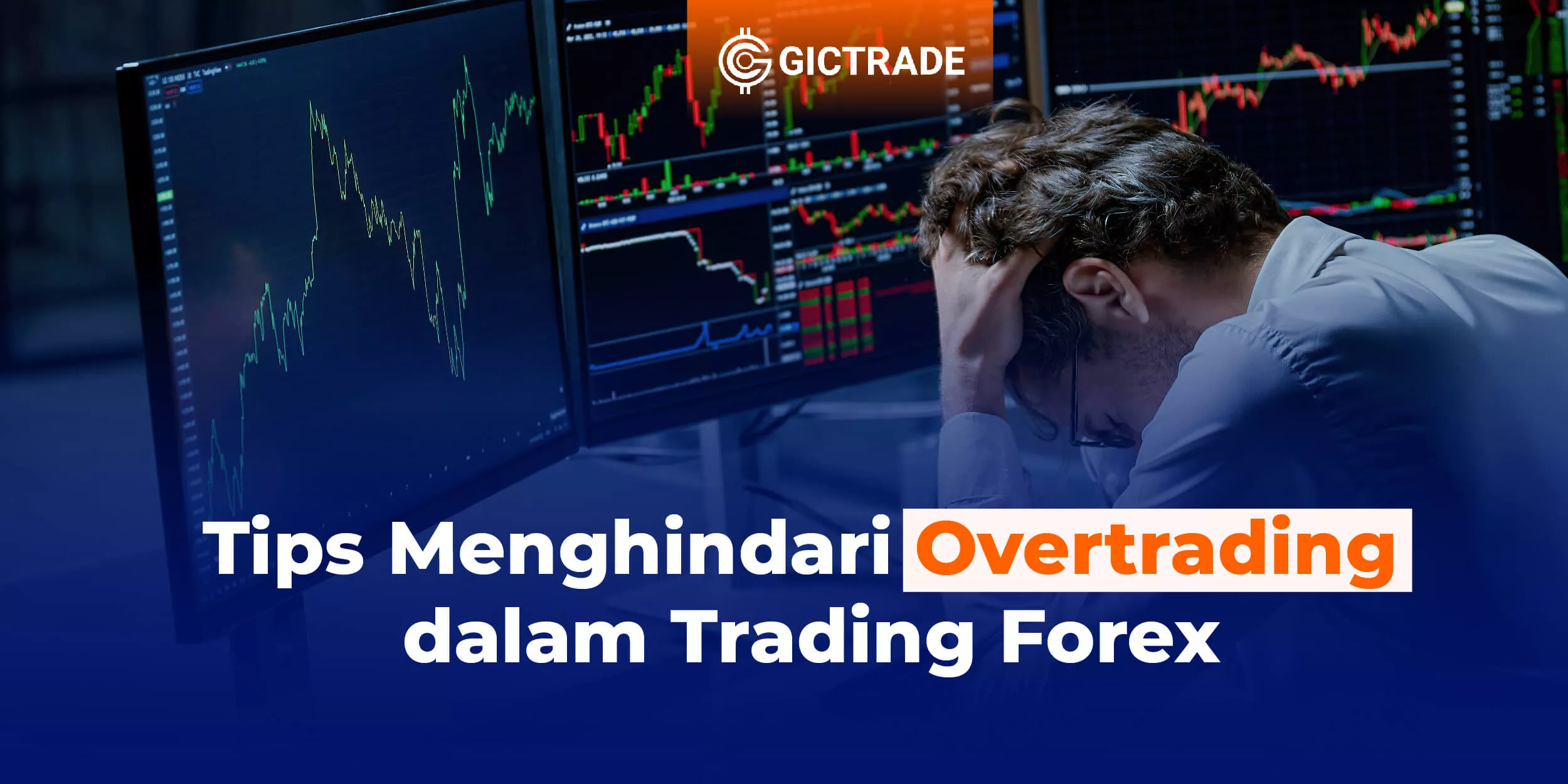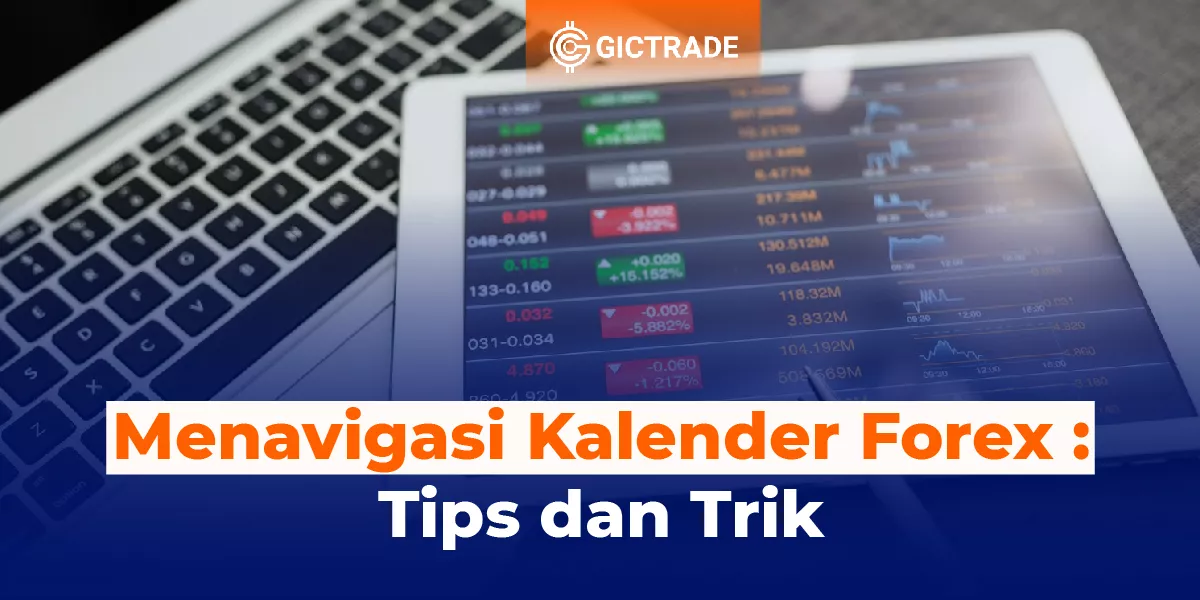Tips to Avoid Overtrading in Forex Trading - In the world of forex trading, many traders are caught up in the practice of overtrading. Overtrading refers to the habit of making too many transactions in a short period of time, without carefully considering the market analysis and the risks involved. This practice can result in significant financial losses for traders.
In this article, we will provide valuable tips on how to avoid overtrading in forex trading. We'll explain important concepts, provide practical advice, and share strategies to help you become a more disciplined trader and reduce the risk of overtrading losses.
Table of Contents
Tips to Avoid Overtrading in Forex Trading
.webp)
Getting to Know Trading Psychology
In the world of forex trading, knowing and understanding the psychology of trading is very important. Trading psychology refers to the influence of emotions and mental attitudes on trading decision-making. A good understanding of trading psychology can help you avoid emotional pitfalls and become a more disciplined trader.
Berfokus pada Rencana Trading yang Jelas
First of all, focusing on a clear trading plan is an important step in managing trading psychology. A good trading plan should include specific and realistic goals, a tested strategy, and clearly defined risk management. By having a clear plan, you will be better able to control your emotions and avoid getting caught up in unplanned transactions.
Control Your Emotions
One of the biggest challenges in trading is controlling emotions. Emotions such as fear, greed, and joy can influence rational decision-making. It is important to learn to recognize these emotions and learn to control them. Train yourself to stay calm and rational in stressful situations. Avoid getting caught up in negative emotions that can interfere with your trading performance.
Obey the Rules Set
In trading psychology, it is important to adhere to the rules that have been set in your trading plan. These rules include predefined risk limits, tested trading strategies, and planned trading times. By adhering to these rules, you can build discipline and avoid getting caught up in overtrading practices. Stay consistent in following the rules you have set.
Manage Stress Well
Forex trading can be a high-stress activity. When you are stressed, your ability to make rational and objective decisions can be affected. Therefore, it is important to have a strategy to manage stress well. You can try techniques such as meditation, exercise, or spending time with family and friends to relieve stress. Also make sure to set up enough rest time so that you can trade with a clear mind.
Keep Learning and Growing
Finally, in trading psychology, it is important to always learn and grow. The world of forex trading is constantly changing, and you need to stay up-to-date with the latest developments. Improving your trading knowledge and skills will give you confidence and help you overcome market uncertainty. Always look for quality sources of information and take relevant trading trainings to improve your understanding. By understanding and managing the psychology of trading well, you can become a more successful and consistent trader. Remember that success in trading depends not only on technical and fundamental analysis, but also on your ability to control your emotions and maintain a proper mental attitude. Stay disciplined, stay calm, and keep learning, then you will have a better chance of achieving success in forex trading.
Setting Realistic Risk and Reward Limits
In forex trading, setting realistic risk and reward limits is essential. This will help you better manage your risk and make more measured trading decisions. Here are some tips for setting realistic risk and reward limits.
Setting the Right Stop Loss
Stop loss is the price level at which you will automatically close the position to reduce losses. Setting the right stop loss is essential to controlling risk in trading. When determining your stop loss, consider your support and resistance levels, market volatility, and risk tolerance. Make sure your stop loss is placed at a level that is rational and in line with your trading strategy.
Determining a Rational Take Profit
Take profit is the price level at which you will close the position automatically to secure profits. Determining a rational take profit will help you lock in profits in a timely manner. When determining your take profit, pay attention to the next resistance and support levels, potential price movements, and your profit objectives. Make sure your take profit is realistic and in line with your trading plan.
Calculating the Risk-to-Reward Ratio
Risk-to-reward ratio is a comparison between potential losses and potential gains in a transaction. Determining a balanced risk-to-reward ratio will help you make more rational trading decisions. Ideally, a good risk-to-reward ratio is at least 1:2, which means that the potential profit is double the potential loss. However, you can adjust this ratio according to your personal preferences and trading strategy.
Paying Attention to Market Volatility
Market volatility it can affect the level of risk and potential profits in trading. In times of high volatility, the risks and potential profits tend to be greater. Conversely, in times of low volatility, the risks and potential profits tend to be smaller. When determining risk and reward limits, consider the current market volatility conditions. Adjust the size of your position and the stop loss and take profit levels to the market conditions you are facing.
Performing Technical Analysis
Conducting technical analysis can help you determine realistic risk and reward limits. By analyzing the price chart and identifying support and resistance levels, you can determine the key levels to place stop losses and take profits. In addition, technical analysis can also help you recognize price patterns and make more accurate trading decisions.
Using Technical and Fundamental Analysis
In forex trading, the use of technical and fundamental analysis are two commonly used approaches to analyze the market and make informed trading decisions. Both technical and fundamental analysis have an important role in helping traders understand price movements and the factors that affect the market. Here is a more detailed explanation of both.
Technical Analysis
Technical analysis involves the use of price charts and technical indicators to identify patterns and trends in price movements. The purpose of technical analysis is to predict the direction of price movements based on historical data. Some commonly used tools and methods in technical analysis include:
- Price charts: Observe price patterns such as support and resistance, trend lines, candlestick patterns, and other chart formations.
- Technical indicators: Use indicators such as moving averages, MACD, RSI, and Stochastic to provide trend reversal signals, overbought or sell conditions, and the right moment to enter or exit the market.
- Trading volume: Observing trading volume to confirm trend strength or price reversals.
Technical analysis can provide information about the right time to enter or exit the market, identify important levels to place stop losses and take profits, and help identify potential trading opportunities.
Fundamental Analysis
Fundamental analysis involves understanding and evaluating economic, political, and news factors that can affect the value of a currency. Common factors analyzed in fundamental analysis include:
- Economic indicators: Observing economic data such as GDP growth, unemployment rate, inflation, interest rates, and trade balance to evaluate the economic condition of a country.
- News and events: Follow news and events that can affect the forex market, such as monetary policy, political policy, geopolitical conflicts, and changes in economic policy.
- Market sentiment analysis: Observing investor sentiment and perception of a particular currency through surveys, confidence indices, and other psychological factors.
Fundamental analysis helps traders understand the economic fundamentals underlying currency price movements. This can help identify long-term trends and predict changes in market direction.
Combining Technical and Fundamental Analysis
Often, traders use a combination of technical and fundamental analysis to make more comprehensive trading decisions. The combination of these two approaches can provide more complete information and strengthen your analysis. For example, technical analysis can be used to identify important levels in a price chart, while fundamental analysis can provide an understanding of what underlies those price movements. In addition, the use of technical and fundamental analysis can also help manage risk better. For example, by combining technical and fundamental analysis, you can gain a better understanding of potential price movements and risk factors to look out for.
Maintaining Discipline and Consistency
Keep a Trading Journal
Keeping a trading journal is an important step in developing discipline and consistency in trading. Record all the transactions you make, including the reasons behind each trading decision. Regular analysis of trading journals will help you identify patterns of behavior that can lead to overtrading, so you can correct and improve your trading strategy.
Using Proper Money Management
Money management is the key to managing risk in forex trading. It is important to set a risk limit that suits the capital you have and manage the position size wisely. Never take on a greater risk than you can afford, and don't let your previous profits or losses affect your trading decisions on subsequent transactions.
Trade Safely With Money Management at GICTrade
If you are a beginner trader and are still hesitant to make a deposit, this is certainly natural, psychologically you are not ready to trade or invest. GICTrade is a forex trading platform owned by GIC. This forex trading platform brings together traders and market makers. You as a prospective customer can certainly choose between the two, namely becoming a trader or a market maker.
In addition, GIC also has a GIC Social Trade feature. By using the Social Trade feature, you as a trader can become a follower who can follow the actions of the masters in trading, either through copy trading (following the trading actions of the masters) or reverse trading (doing the opposite action, for example: the master buys, you sell).
This feature makes it easier for beginner traders to still be able to learn forex trading but still make a profit. By opening a demo account on GICTrade, you will instantly learn and get acquainted with the MetaTrader 5 application because GICTrade uses the MT5 forex trading application to make transactions. Let's learn forex trading from now on!
You can also trade on the GICTrade app with its latest feature, the ECN account, enjoy the advantages of the latest features with the lowest spreads starting from 0!
Frequently Asked Questions (FAQs)
Q: What is overtrading in forex trading?
Overtrading in forex trading refers to the habit of making too many transactions in a short period of time, without carefully considering the market analysis and the risks involved.
Q: Why can overtrading be a problem in forex trading?
Overtrading can be a problem in forex trading as it can result in significant financial losses. Impulsively executed transactions without good analysis can carry unnecessary risks.
Q: How to avoid overtrading?
Some ways to avoid overtrading are to have a clear trading plan, control emotions, set realistic risk and reward limits, use technical and fundamental analysis, and maintain discipline and consistency.
Q: What are stop loss and take profit in forex trading?
A stop loss is an order set to close a position automatically when the loss reaches a certain limit. Take profit, on the other hand, is an order set to secure profits when a position reaches a predetermined level.
Q: How to manage risk in forex trading?
Some ways to manage risk in forex trading are to use stop losses and take profits, set a balanced risk-to-reward ratio, understand economic news and events, and use proper money management.
Q: Why is discipline and consistency important in forex trading?
Discipline and consistency are important in forex trading because they can help you avoid overtrading and make more informed trading decisions. By maintaining discipline and consistency, you can reduce the risk of loss and increase your chances of success.
Conclusion
Avoiding overtrading in forex trading is the key to achieving long-term success. By understanding the psychology of trading, setting realistic risk limits, using technical and fundamental analysis, and maintaining discipline and consistency, you can become a better trader and reduce the risk of unnecessary losses. Remember to always take the time to do the analysis and plan each transaction carefully. Always stick to your trading plan and stay disciplined. Hopefully, the tips in this article will be useful for your trading success!
| Also Read : Understanding Risks in Forex Trading and How to Avoid Them |
 Last:
Last: 






